The Position of the Day Archives
A running blog on chess compositions
by Satanick Mukhuty
Author and Problemist, ChessBase India

For queries and suggestions write to chessbaseindiasocial@gmail.com
Click here to download our app and follow our positions of the day with solutions daily.
March 3, 2021 - The Only Three-fold Indian?
Here's an ambitious but, unfortunately, a not too successful attempt to triple the celebrated Indian theme. Pauly, the giant that he was, nearly achieved this Herculean task with perfection. Where do you think his genius fell short?
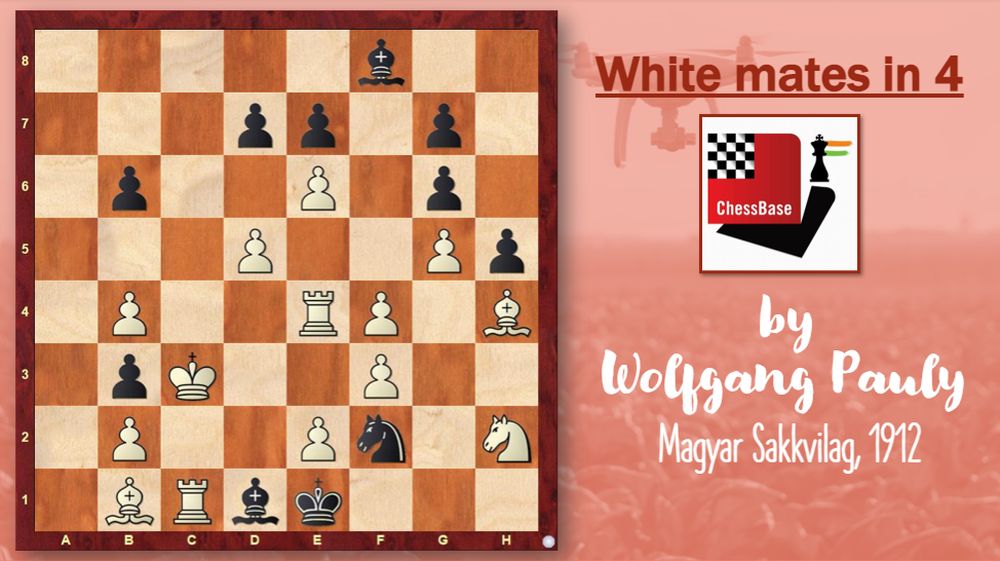
In 1844 the strong English chess player Howard Staunton, and then director of the Chess Player's Chronicle, received a curious letter from India signed Shagird. It contained a problem, a mate-in-4, that would, in the next decade or two, break new grounds in the world of chess composition. Because Staunton didn't know what the term Shagird meant, he assumed the composer of this problem was an Indian, and thus the core idea of this "little" masterpiece came to be known as the Indian theme!
However, it wasn't an Indian who had sent the letter to Staunton—it was, in fact, an English chaplain by the name of Henry August Loveday who lived in Delhi at the time. Our Indian readers will perhaps readily recognize that the word Shagird (शागिर्द) was merely intended to mean disciple or protégé!
Henry Augustus Loveday, The Chess Player's Chronicle, 1845
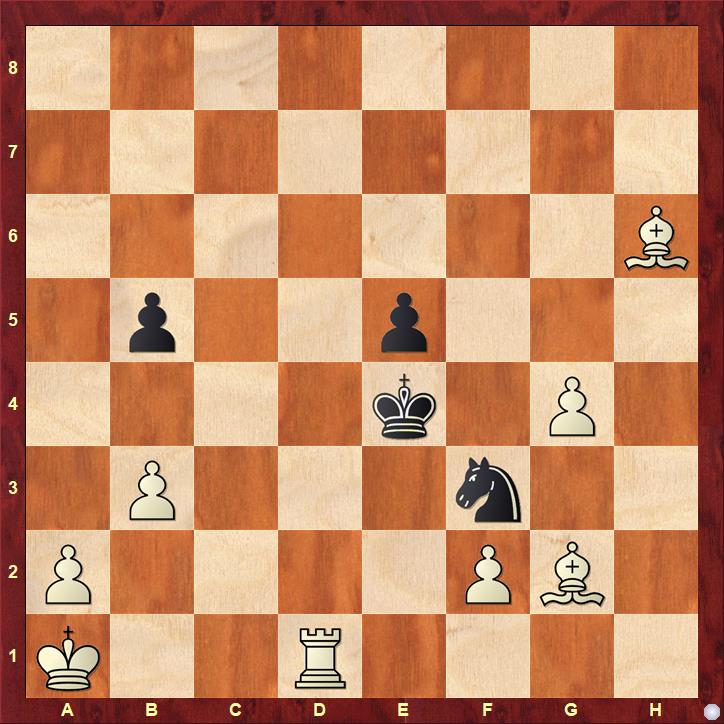
The above is an 1845-version of Reverend Loveday's problem. It is White to play and mate in 3. Let us first briefly discuss the solution to this problem, and the impact it had on the subsequent development of chess composition literature, before delving into Pauly's complex creation. The key move here is 1.Bc1! The bishop crosses over the critical square d2 which, as we will see, would be occupied later by an interfering piece. In problemist terminology, such a move is called a critical move. 1...b4 is the only legal response. Notice how Black is running out of moves here. White must, therefore, to avoid a stalemate, make some room for the enemy king. Hence, 2.Rd2!! and now simply 2...Kf4 3.Rd4# finishes it off.
This scheme of withdrawal of a line piece (the critical move), followed by its ambush, followed by the final checkmate (with discovery) became known as the Indian theme and it ushered in a whole new world of possibilities in chess hitherto unknown in three and a half centuries of the game's history.
The great Sam Loyd was the first problemist to truly grasp the potential of this theme, and he famously quipped that "by the skillful use of the pieces, it would not be a difficult matter to illustrate how half-a-dozen little Indians might dwell harmoniously in the one wigwam." Indeed, he created several two-fold Indians, but a three-fold Indian remained elusive, and a four-fold one was (and still is, to this day) almost unthinkable!

Now we come to our main problem, our position of the day for 3rd March 2021, Wolfgang Pauly came up with this almost 67 years after Loveday's idea got published, and to this day, it is probably the only known three-fold Indian. It goes without saying that a composer of stature lesser than Pauly's could never have managed such a feat, but even Pauly himself failed to achieve this Herculean task with the fullest perfection.

The solution here starts with 1.Bd3! and now Black has three options: (a) 1...b5, (b) 1...d6, and (c) 1...dxe6. We examine them one by one below:
(a) 1...b5 is taken care of by 2.Bxb5! and now, since 2...dxe6 simply allows 3.Rd4 followed by 4.Rdxd1# or 4.Rcxd1#, the thematic defense is 2...d6. This leads White to execute the Indian manoeuver: 3.Rc4! Kxe2 4.Rxe4#
(b) If 1...d6 then 2 Ra1! - the rook performs the critical move this time, and b1 is the critical square where the interference takes place so that 2...b5 is met with 3.Bb1! Bc2 4.Bxc2#.
(c) And finally, in case 1...dxe6, simply 2.Rxe6 does the job. 2...b5 is met with the standard stalemate-avoidance: 3.Be4! Kxe2 4.Bd3#
The problem does seem to achieve the Indian theme thrice, but as experts will quickly point out, 2.Rxe6 in the third variation isn't a critical move, it simply clears the e4 square for the bishop and doesn't cross over it. Therefore, even though this problem is a triple Indian of sorts, it is missing a critical move essential to the theme. Apart from this, 2.Rxe6 also comes with the impure motive of capturing a pawn; the theme itself doesn't forbid against so, but it's something that most composers today will likely frown upon. Despite these shortcomings, this is probably the only problem showing a three-fold combination of the Indian with some degree of success. If you know of a second one that betters this do write to us at chessbaseindiasocial@gmail.com.
March 2, 2021 - Looking Back to Look Forward
It is no secret that in terms of sheer computational strength, machines today have far surpassed us, humans...However, if there's one thing that remains safely beyond the reach of the silicon monsters, it is imagination. We heartily invite you to use the best engines at your disposal to solve the following problem. Usually, it is your engine that helps you analyse positions, right? Well, who knows, maybe this time it would have to be the other way round!
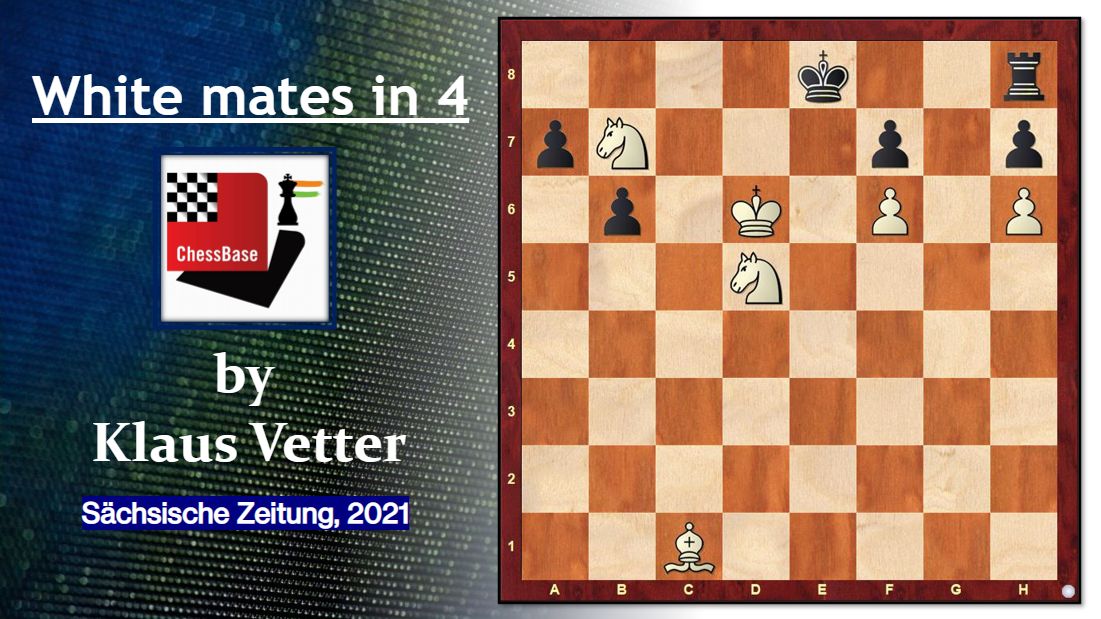
The key to solving this is asking yourself what Black could have played last. Yes, often a step backward can lead you to the way forward—in chess, in particular, this is referred to as Retrograde Analysis. Of course, the pawns on a7, f7, and h7 couldn't have moved last, they are after all still on their home squares. The pawn on b6 too cannot be retracted back to c7, because that puts the white king under an illegal check. Conclusion? Black's last move must have been either by the King on e8 or the rook on h8, implying that Black in fact cannot castle. The computer is unable to detect this simple point and therefore it sees no mate in 4 in the above position!
Now, once it has been established that Black has lost his right to castle, the forward play is fairly straightforward. 1.Ba3! is the first move of the solution, a fine ambush key that threatens 2.Kc6 followed by 3.Nc7#. The only two moves that thwart this now are 1...Kf8 and 1...b5. However, the first move allows 2.Kd7+ Kg8 3.Ke8 followed by the unstoppable 4.Ne7#, and the second move only stalls the threat idea, in this case after 2.Kc6 b4 3.Bxb4, there's no defense against 4.Nc7#. Take note, if Black could only go 1...0-0 here, the problem would cease to have any solution!
March 1, 2021 - A Cat and Mouse Game!
The enormously gifted Mark Liburkin died prematurely at only 43 but left behind an extraordinary legacy for the posterity of the study art to cherish. The following plays out like a dizzying Hitchcockian thriller; unless you're dead or downright insentient, it WILL get your heart racing!
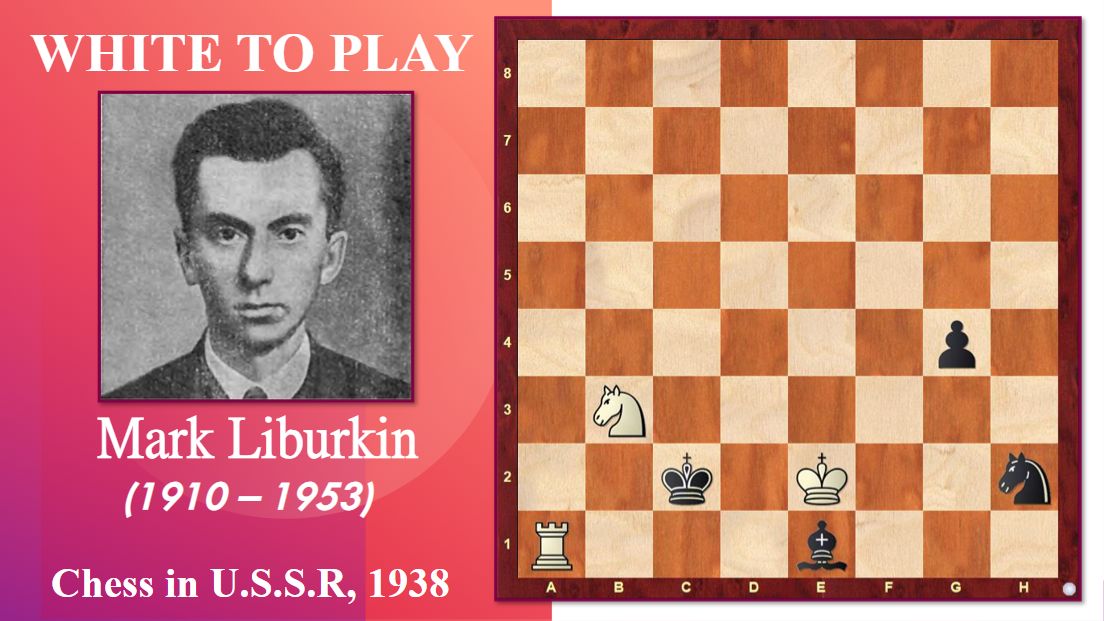
This one is a classic - perhaps, it is Liburkin's most evergreen composition. Siegfried Hornecker in his excellent "study of the month" article The Life and Times of Mark Liburkin writes: "Yes, this study is world-famous. Yes, this study is the one you would show if would want to explain what a systematic manoeuver is. Yes, it is worth showing again and again. Yes, probably most readers already know it. Yes, those who don't know it yet will (hopefully!) love it. And yes, this study 'only' got the 4th prize in the first half of 1938."
1.Rxe1? Kxb3 obviously leads to a draw, which means White first needs to transfer his b3 knight to safety, but where exactly is this safety to be found? Well, let's discover!
1.Nd4+ Kc3 2.Nb5+ Kc4!? not 2.Kb4 as it allows 2...Rb1+ after which White can simply win the bishop on e1—the chase must therefore continue! 3.Nd6+ Kc5 4.Nb7+ Kc6 5.Nd8+ Kc7 6.Ne6+ Kd7 7.Nf8+ Ke7 8.Ng6+ Kf7 9.Nh8+
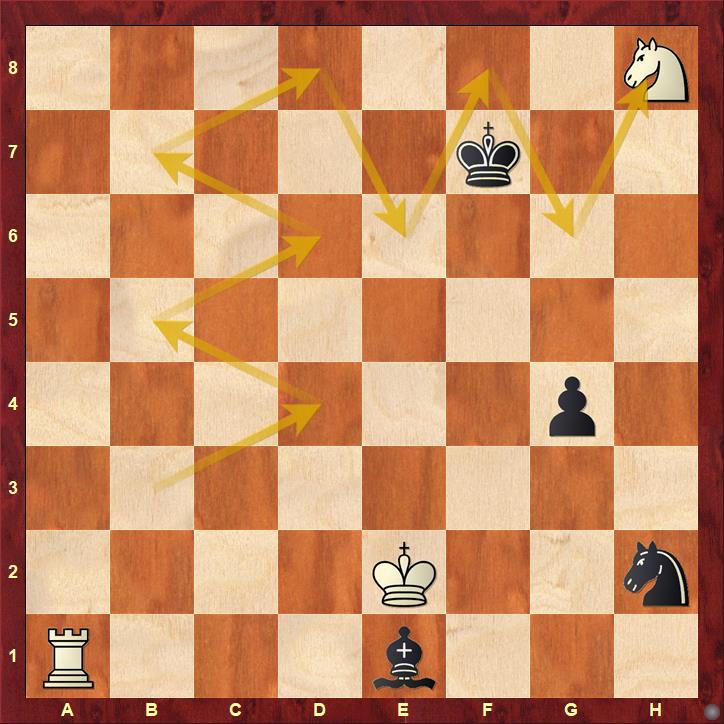
9...Kg7 and now 10. Rxe1 Kxh8 11. Rh1! the point - White gets this critical pin on the h-file. But can't Black just push g4-g3 and save the day? Not really! 11...g3 12.Ke3! Kg7 13.Kf4! White's king is right on time to defend f3 and g4, while Black's king languishes too far away. Finally, 13...g2 14.Rg1 Nf1 15.Rxg2+ Kh6 16.Rf2 and a clear triumph! Now, go ahead, feast your eyes playing out the amusing solution on the replayable board below.
